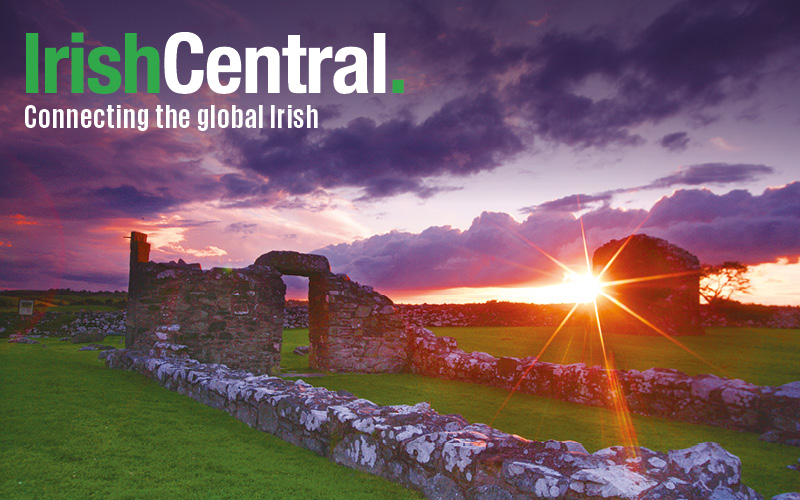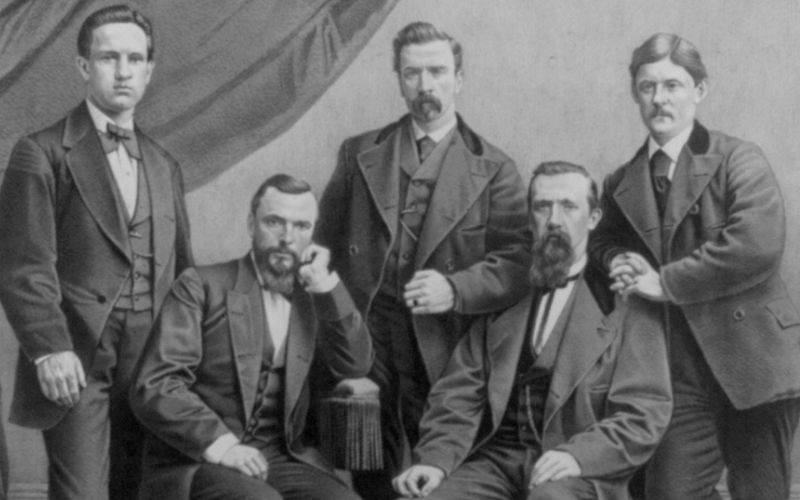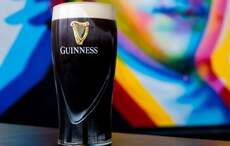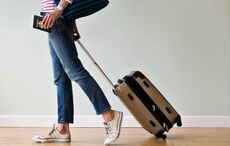Sometimes I wonder who I am. I'm Irish of course; my family's roots have been embedded in that soil for hundreds of years. But there's something else too.
I always felt a bit of an oddity growing up in rural Ireland. In my first Holy Communion photograph, I'm at least two feet taller than any of the other seven-year-olds, who stand around me like flower girls at a wedding. Recently I attended a Scandinavian function and I felt as if I'd found my people. Everyone looked like me -- tall and fair-haired. People talk about the Celts but forget that we had several hundred years of Viking rule. And one of them must have been down our way.
My mother's side came over with Strongbow, the French-speaking Norman who landed in County Wexford in 1170 and ended up as King of Leinster, having married Aoife MacMurrough. This side of the family settled in Waterford and were inclined to join the British Army (my mother's early years were spent in India) and have pictures of Queen Victoria in their houses.
My father's family settled in Tipperary where I grew up, and was more inclined towards nationalism. (I was brought up on tales of the Black and Tans on the one hand and the sun never setting on the British Empire on the other.) Three "Wild Geese" Harty brothers fled to France and served in the Irish Brigade. A nephew of theirs, one Oliver Harty, organized the Brigade Etrangere that was part of the expedition that accompanied Wolfe Tone to stormy Bantry Bay. Later he would accompany Napoleon on his campaigns, and was created Baron de Pierrebourg of Alsace. I know all of this because the French side traced us back when I was a child, and we are still in touch. My paternal grandmother was Seymour. The name is English, as in Jane, Henry VIII's third wife. My Seymours were farmers who doled out the American corn to the needy during the Famine. We know this because of a Famine diary record that was handed down.
So who am I? We are part of all that we have met, as the poet said. I have a Roman nose, which makes me feel at home in Italy and Greece; white skin, which doesn't make me feel at home in either Italy or Greece or anywhere the sun shines too brightly. I'm taller than the average Irish woman and I have strange moments of complete inarticulateness when English seems like a foreign language; this I believe is due to a mix of ancestral genes and languages. But I'm Irish. It's in my soul.
My heart lights up when I see another Irish person. Like those two young construction workers I saw on my way to work today. I hate the Notre Dame Leprechaun, but I do believe in little people, and in the magic of the whitethorn tree. I love Irish music, and there are more Irish seisiúns in New York than anywhere else. When I hear an Irish fiddle I think of the miners and the railroad workers and the immigrant Irish who had little else but brought their music with them. When I hear an Irish fiddle I know I have a soul.
I believe I can tell an Irishman from the way he walks -- the self conscious gait, the way he holds his head. I believe I can tell and Irish American down to the generation. I learned with Americans I have to communicate, and with Irish people so much is left unsaid. Or is said with a nod or a wink or an unspoken gesture. And there's a vulnerability there too, in the knowledge that another Irish person can read me -- there is no hiding, they can see right through me. Like all people who have faced danger together, the Irish have a highly developed intuitive sense of each other.
Perhaps it's the fusion of blood of conqueror and conquered, of indigenous and colonist that we all are in Ireland -- surely as mongrel a race as Americans -- that makes me delight when I read about a Filipino-Irishman playing football for Dublin, and a Fijian playing hurling for Cork. Or meet with a Chinese Irish family in Hawaii. Here in America, where I now live, the Irish have married into other ethnic groups more than any other race. I count among my friend Irish-Italian, Irish-German and Irish-Jewish. I hope for some dark-skinned, warm-blooded future partners for my red-haired, pale-skinned California nieces and nephews. We are far too white in my family to survive global warming.
And what of the Irish America? Eugene O'Neill once remarked that "the thing the critics don't get about me is the fact that I'm Irish." O'Neill never made a visit to Ireland. Does that make him any less Irish? I don't think so.
Another famous writer, John Steinbeck, said, "I am half-Irish, the rest of my blood being watered down with German and Massachusetts English. But Irish blood doesn't water down very well; the strain must be very strong."
It know that's true. That despite everything we encounter, somewhere in the landscape of the heart those Irish genes refuse to lie quiet, but sing out no matter in what country, no mater with who they intermingle. Didn't we learn in school that "the Viking became more Irish than the Irish themselves"?
My niece Caitlin, American by birth, with an English mother and and Irish father, loves Irish dance. I think of her with her red hair flying as she dances for my mother's 80th birthday, in San Francisco. Am I going to tell her that she's not Irish? Or my French cousins that they are not entitled to their Irish heritage?
What makes a person Irish, according to G.B. Shaw (who the New York Times insists on calling British), is a state of mind. Something to ponder as Ireland grapples with its first immigration "problem," and Lithuanians, Romanians, Bosnians, and refugees from Africa become the new Irish.
Note to readers: This essay appeared in a book called Being Irish edited by Paddy Logue.




Comments